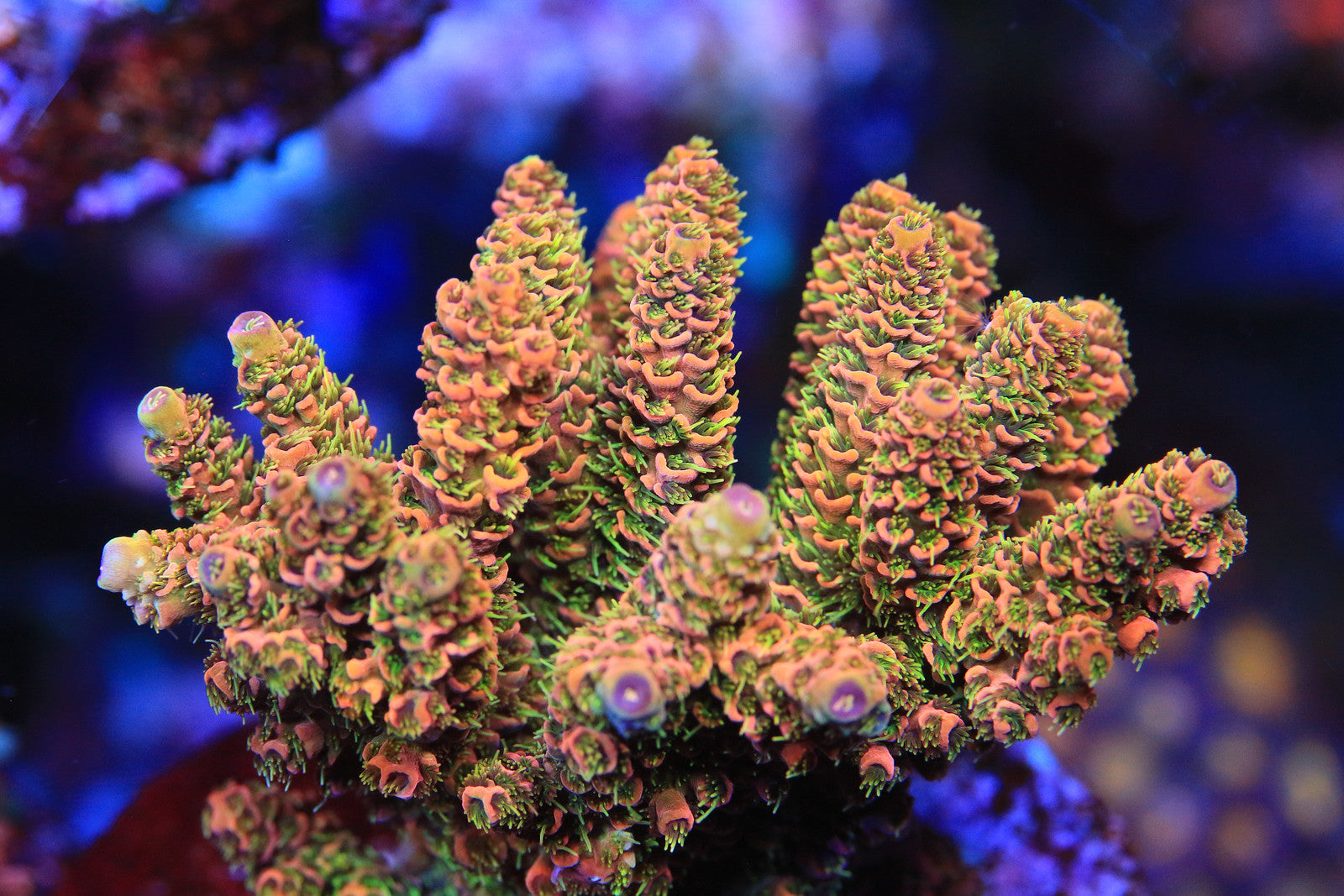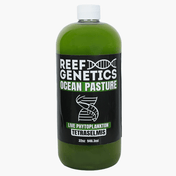Aquarists have been using different types of lighting to illuminate their reef aquariums for many years. While there are a few different popular types of lighting available on the market, it can be confusing to decide which type is best for your tank.
The importance of reef aquarium lighting is due to the symbiotic relationship between coral and an algae species known as Zooaxantellae. The coral relies on the algae for oxygen, while the algae rely on the coral to provide a protected environment and compounds needed for photosynthesis, making proper lighting vital to keeping your coral healthy.
In this blog post, we’ll take a look at the pros and cons of three common types of lighting used for reef tanks – metal halide, fluorescent, and LED – and help you decide which type is best for your aquarium.
Reef Aquarium Lighting Guide: Common Lighting Options Available for Hobbyists
Metal Halide
Metal halide lighting fixtures were once the standard for reef aquariums which is no surprise as they've been around since the 1960s. They feature an inner arc tube and an external bulb casing. They typically emit light when an electric current in the arc reacts with a gaseous mixture of either xenon, argon or mercury, and metal halides on the tube's casing. Metal halides produce significantly higher light intensity and are classified under high-intensity discharge lighting systems.
Most fixtures under this category often have an output of 75-100 lumens, which is about five times higher than standard incandescent lights. As a result, they're often considered an incredibly efficient source of white light, which is how they became popular among aquarium hobbyists in the first place. However, the high intensity also means metal halide lighting runs hot a lot faster and may potentially increase an aquarium's water temperature and your energy bill. They also have a shorter lifespan. Thanks to this, these fixtures are often better suited for reef aquariums with a depth of at least 24 inches or where other options wouldn't be powerful enough to deliver sufficient illumination.
Fluorescent T5 Lighting Fixtures
Like metal halides, T5 lighting fixtures have been around for some time. These are regular fluorescent fixtures that are named after their shape and diameter. The T denotes the tubular shape of the bulb, while the 5 indicates the diameter in [units]. T5 lighting fixtures come in various sizes and often produce a soft-diffused light ideal for reef aquariums, especially those with branching corals since they have no shadows. T5 fixtures also produce less heat than metal halides, come in multiple color temperatures, and since they're technically smaller, you can fit multiple in your tank to achieve optimum lighting.
The catch? T5 lighting fixtures aren't as long-lasting and may need frequent replacement. They also don't achieve the shimmer effect critical in accurately recreating marine ecosystems in a reef aquarium and lack a timer, making scheduling a bit tricky.
LED Lighting
Light-emitting diodes, or LEDs, are currently the most popular light option among hobbyists. They boast superb light intensity and, unlike metal halide bulbs, don't produce too much heat. LEDs come in different colors and, depending on the model, may feature digital controls allowing you to easily adjust the light spectrum until you achieve optimum lighting in the reef aquarium.
Compared to T5, LEDs are more advanced, energy-efficient, and available in multiple colors, including options that accurately reflect the natural hues of corals and other marine life in a reef aquarium. However, Coral reef LED aquarium lighting is more expensive, but it should be no deal-breaker since they last longer and do a much better job at helping your aquarium thrive.
The only thing you'd want to be mindful of is cheap, inefficient LEDs, as they're pretty in plenty nowadays. Shop yours from reputable manufacturers specializing in lighting fixtures for aquarium hobbyists. Also, ensure you check out reef aquarium LED lighting reviews to see what other buyers have to say about any LED fixture you're considering.
Reef Aquarium Lighting Guide: Important Factors to Consider
Light Intensity
Matching the lighting needs of your individual coral species is important. Excessive light can kill corals, while too little light can impede photosynthesis. For instance, small stony corals often need high-intensity light, while large stony corals may require moderate light. Low reef aquarium lighting is around 15 lumens, medium around 30, and high around 60. When in doubt, talk to your local reef store and ask for advice.
Lighting Schedule
Like you, corals and other marine species in your aquarium have a day and night cycle. For most tropical fish and marine species, the cycle is about 12 hours of light and 12-hours of darkness every day. Setting up your reef aquarium lighting on a timer can help maintain a regular cycle for your aquarium to thrive.
Color Spectrum
Different corals require different light spectrums to thrive. The color of light your coral can best utilize depends on its natural habitat, as different colors reach different water depths. Generally, deep water coral can benefit from blue and violets, while corals that naturally dwell in shallow areas will thrive with a red wavelength. Your goal as a hobbyist is to recreate the natural habitat of your corals, so ensure you do the proper research ahead of time.
The Verdict
Choosing the right lighting for your reef aquarium can be tough. Luckily, there are many different types of lights available that have their own unique pros and cons. Your selection will depend on what you need from the light in terms of performance or budget.
Think you need more help weighing your options? Don't hesitate to talk to the professionals at Top Shelf Aquatics today. We're always available to answer your questions and help you explore our wide range of corals, fish, and aquatic supplies. Join Top Shelf's VIP club today and get notified about exclusive promotions, discounts and upcoming events.
Which style of lighting do you think would work best in your saltwater tank? Let us know by leaving a comment below!



















